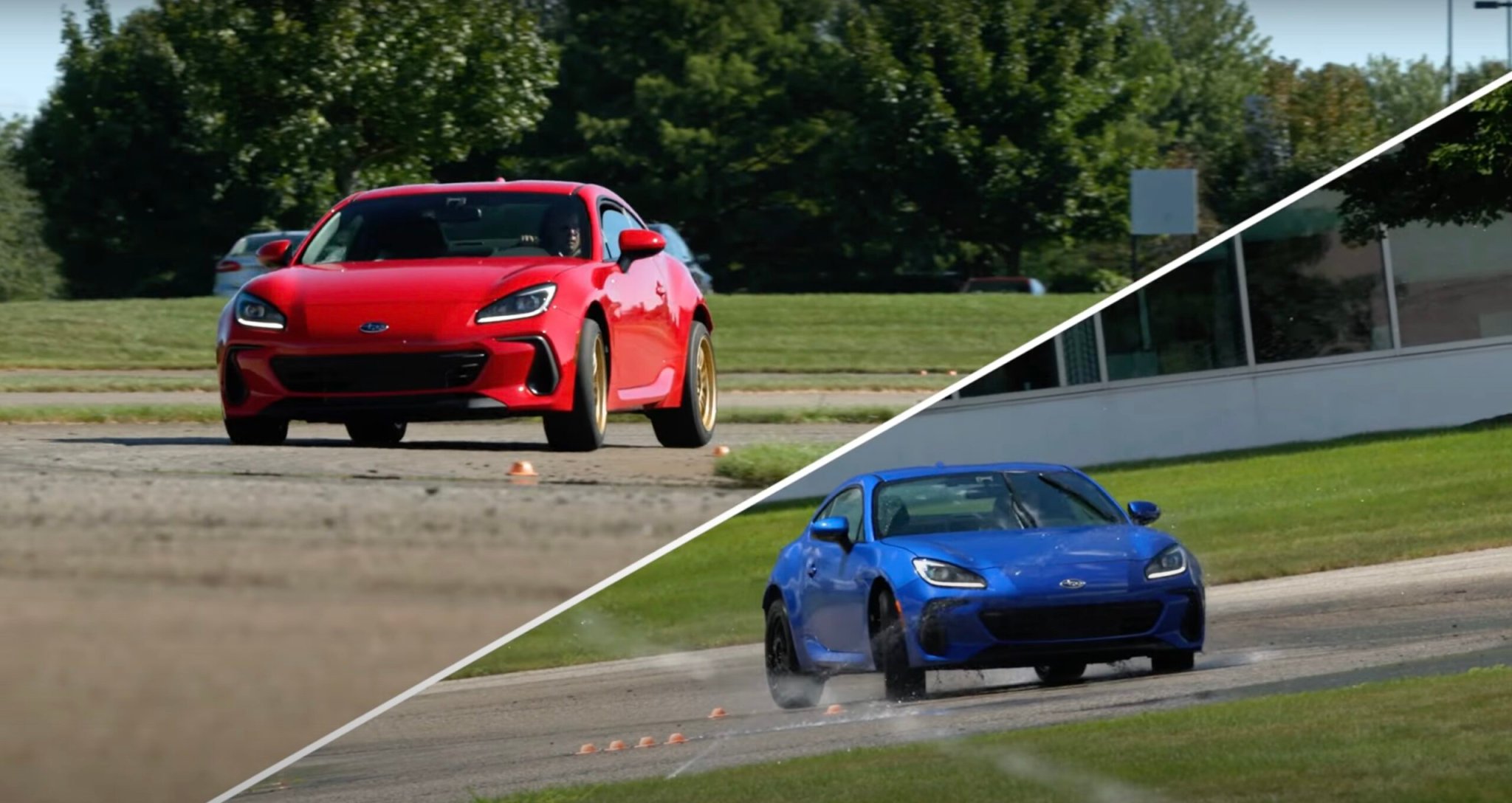

Manufacturer recommendations to Real Racers™ are like spitting into the wind: ill-advised. That’s because Real Racers™ are only accountable to lap times, and even then, those don’t settle much. One thing we’re looking to settle here, though, is the question of how tire width helps or hurts those lap times.
One of those time-tested and oft-ignored recommendations has been wheel-and-tire combos approved by any manufacturer. The rule of thumb in the paddock: as wide of a tire as you can get away with on as narrow of a wheel as you can get away with. (And if you can’t get away with it, argue until you do.)

That’s why the folks at Tire Rack brought data into the debate, and the results are surprising. For starters, all the wheel and tire combos were fitted to Subaru BRZs with stock suspension and everything else. A control time was set, and then three different tire widths were tested on three different wheel sizes to measure performance among all the setups in the wet and dry. All three tires were Bridgestone RE-71RS models: 215/45, 225/45, and 245/40. All the tires were mounted to Enkei RPF1 wheels: 17×7, 17×8, and 17×9.

In the dry, the 215s were usually the most forgiving for newer drivers, although not the fastest. The 215s mounted on the 17×9 was a track-only setup and didn’t match the control time, but it came close. Real Racers™ rejoice; you’re right, narrow is bad for now. The 225s in the dry all exceeded the control time, even on the most narrow 17×7 wheel, and the 225s mounted on the 17×8 was the most balanced setup, the drivers reported. The 225s on the 17×9 wheel were the fastest and felt the best, reported the hotshoes. So if narrow is bad and wider is better, then widest must be best? Not exactly. The 245s on 17×7 wheels was slower than the control time, and on 17×8 was only marginally better than the control time. The 245s on 17×9 wheels were narrowly slower than the 225s on 17×9, but felt much more nervous, according to the drivers. Suspension tuning could make them faster in the dry, but again: stock setup.

In the wet, almost the inverse was true. The 245s were much slower in the wet, and the 215s universally shined. The 215s on 17×8 wheels was the quickest of the group, and none of the 245s beat the control time.
The takeaway, according to Tire Rack? A well-supported tire is better than a wider tire on a narrower rim. Dialing out understeer could make a wider tire quicker, but if you’re already there, then you’re probably doing a lot more to the car than just fidgeting with wheels and tires. Of course, Real Racers™ may argue the results, but they also argue everything else.
Got a tip? Send it in to tips@thedrive.com